- Home
- >
- Preservation Archaeology Blog
- >
- A Visit to New Mexico

(December 26, 2017)—One of my favorite things about working here at Archaeology Southwest is the great variety of projects we work on as we combine archaeological research, preservation, and public outreach. Two weeks ago, my colleagues Andy Laurenzi, Allen Denoyer, and I took a three-day trip to the Mimbres and Upper Gila areas that hit all three of those notes.
Our first task was to check on some of the archaeological sites we protect in the Mimbres Valley. Andy has made numerous trips to these sites over the years as our Southwest Field Representative. Unfortunately for us he will be retiring soon, and Allen and I were anxious to visit these sites so we may continue to help monitor them in the coming years. Some were places I’d seen many times before, such as the Mattocks site, a Classic Mimbres village we visit annually with our Preservation Archaeology Field School students. That site is open to the public, and every year I enjoy seeing the latest in the series of improvements the Grant County Archaeological Society and the Imogen F. Wilson Education Foundation have made to visitor facilities.
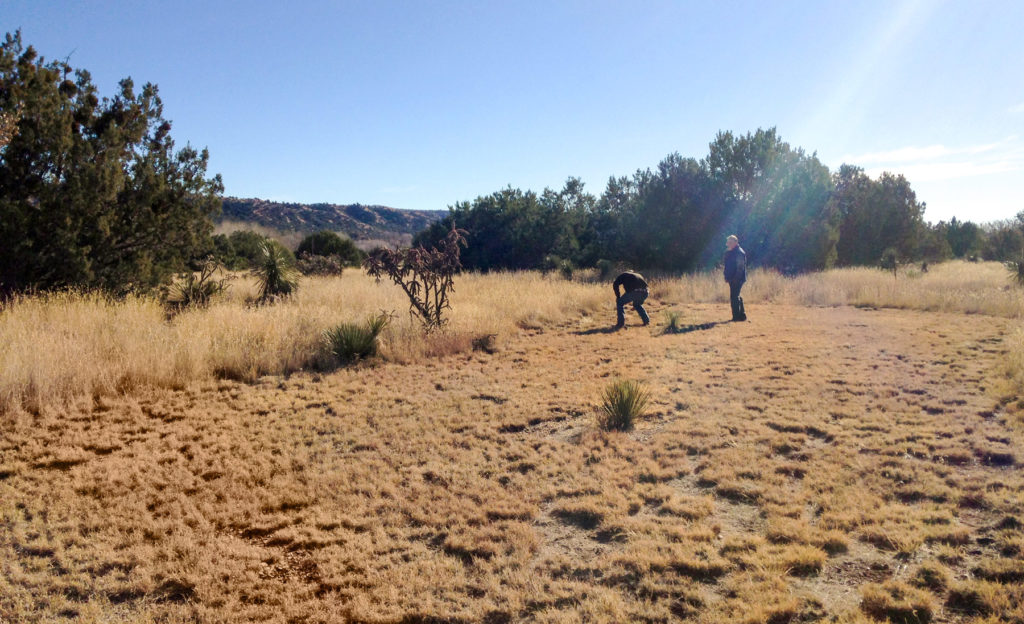
Other sites we checked on included some I hadn’t seen in years, like the McAnally site, a cluster of pithouse depressions from the Early Pithouse period on a hilltop high above the Mimbres River. We also got to visit some places I’d read about but never seen in person, including the Janss and Wheaton-Smith sites, and we checked in with local friends of Archaeology Southwest who have an interest in the area’s archaeology and keep an eye on some of these places the rest of the year. We were lucky to stay at the NAN Ranch, an 1880s ranch (and now a small hotel) in the Mimbres valley that hosted archaeologists from Texas A&M University on a long-running archaeological project directed by Harry Shaffer. The collections from that site are now in the Western New Mexico University Museum in Silver City. We loved seeing the historic ranch buildings and having the chance to wander over some of the ranch’s 45,000 acres looking for some of the many archaeological sites preserved there.
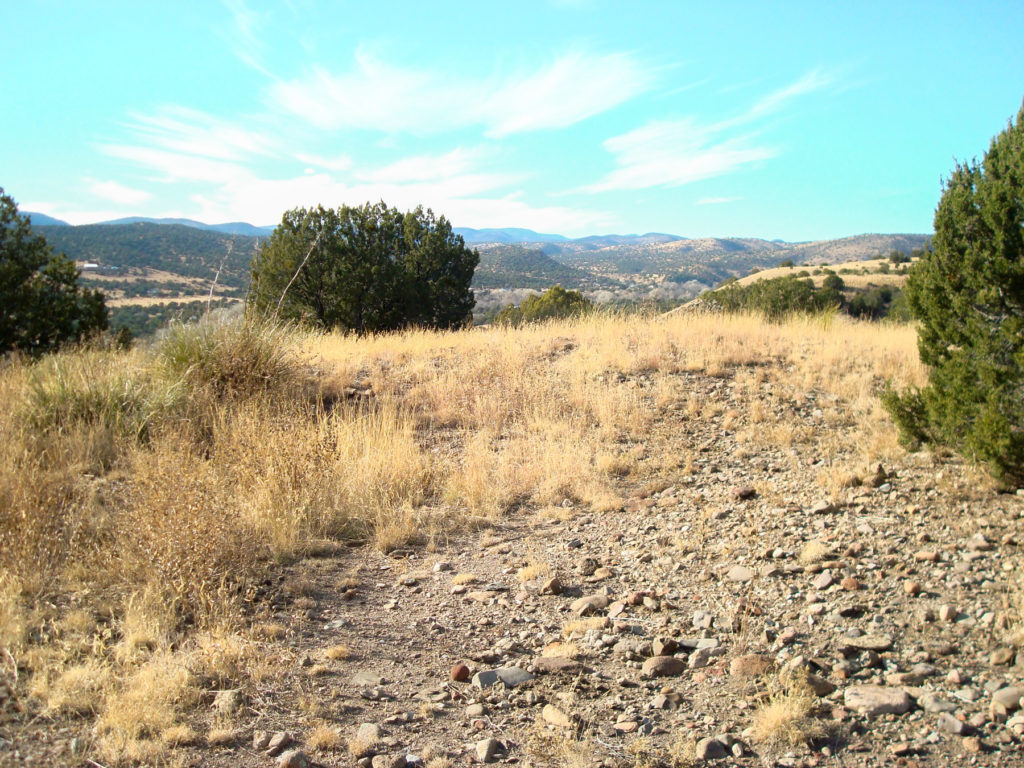
I really enjoyed seeing these places, especially the Janss site. Although I’ve recently been working with data from the Mimbres Foundation’s small test excavations there in the 1970s, I’d never visited before, and seeing a Cliff phase Salado roomblock without a single bulldozer cut in it made me very happy. I was also lucky to have the chance to take a last road trip with Andy before his retirement—I’m really going to miss him, and I know everyone else in the office will too.
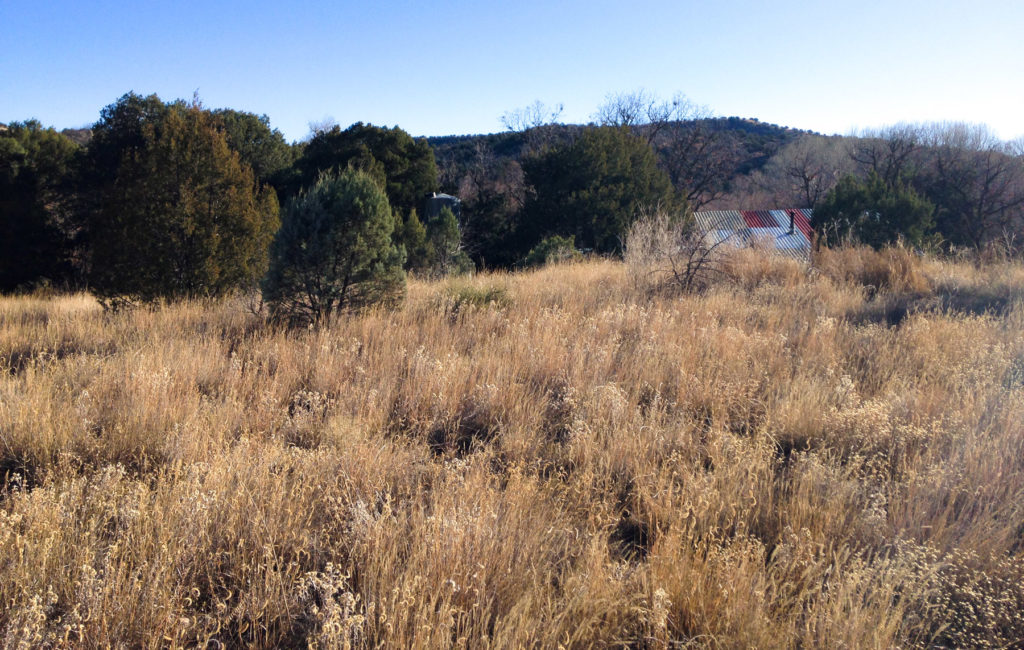
Allen joined us on as many site visits as he could, but his main activity on this trip was a series of public outreach events for children arranged by Gila librarian Madge Slavec and held at the Bayard Public Library, the Guadalupe Montessori School in Silver City, and Cliff School. Allen and I spend every summer in the area during our field school, and many of the local kids recognize him by now. The Cliff School event was the largest, so I joined Allen for the day to help as well over 100 students in grades K-6 spent the morning taking turns trying out replica axes, grinding tools, fire drills, bone awls, and many other items. Growing up in Cliff, kids are surrounded by archaeological sites, so they were very familiar with these ancient tools. They were excited to try using Allen’s replica versions and asked great questions about local archaeology.
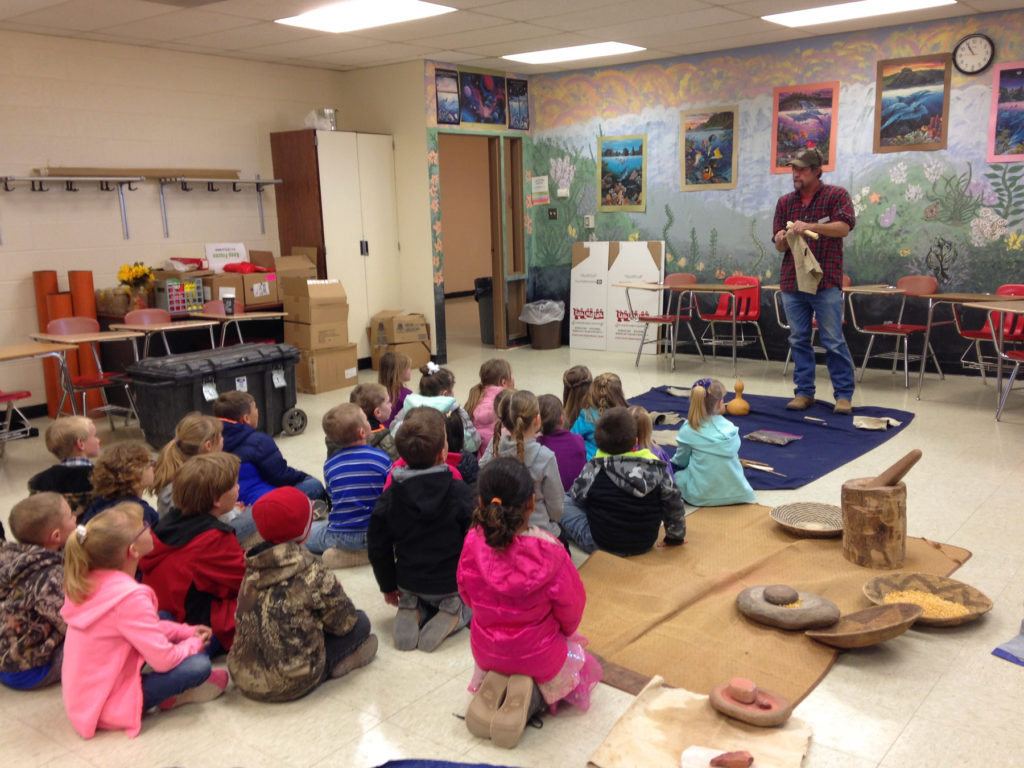
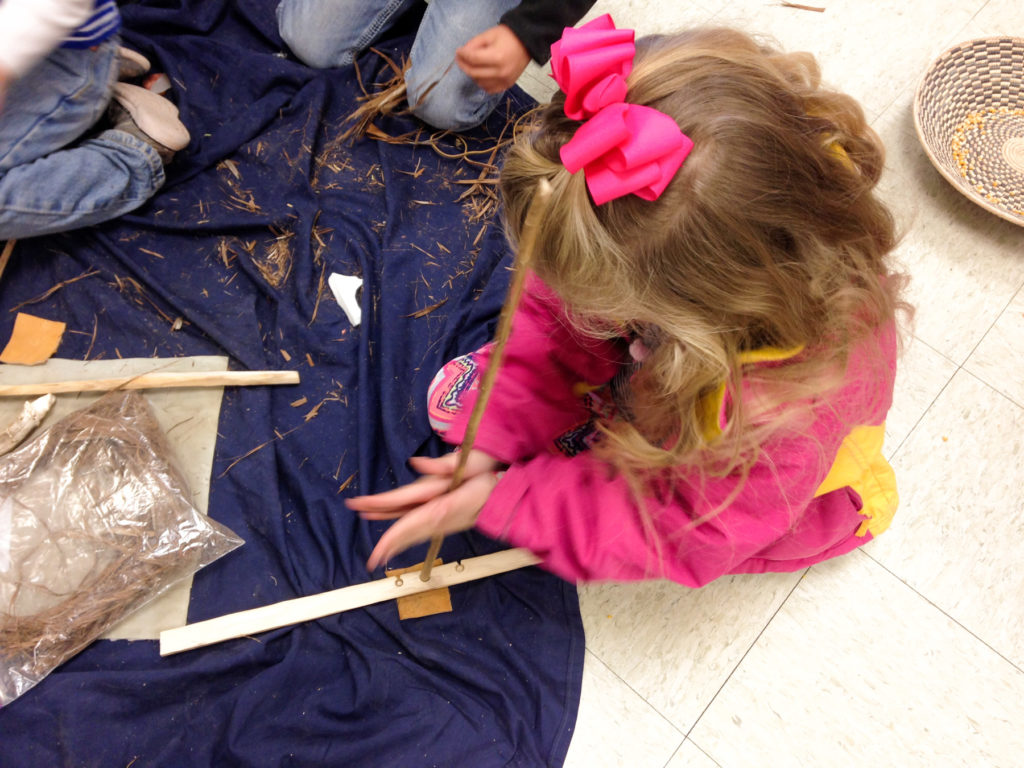
In the afternoon, the same classes returned for outdoor activities: throwing darts at a foam deer target with atlatls, and throwing rabbit sticks at fuzzy stuffed bunnies. We talked about the need to protect gardens and fields from marauding critters and bring home meat for the table at the same time (in the past and today), and there was a lot of excitement as the air filled with projectiles and kids cheered each other on. Our summer field cook Julie is the school secretary, and her questions about how “her” elementary school kids enjoyed the day reminded me of the way she checks on “her” college kids’ summer eating habits.
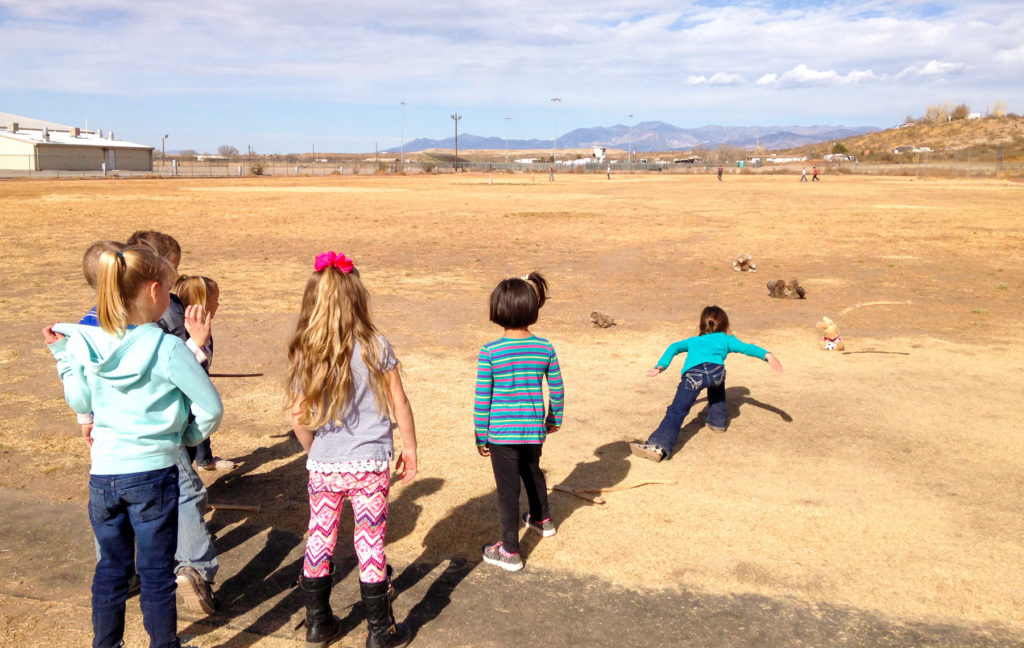
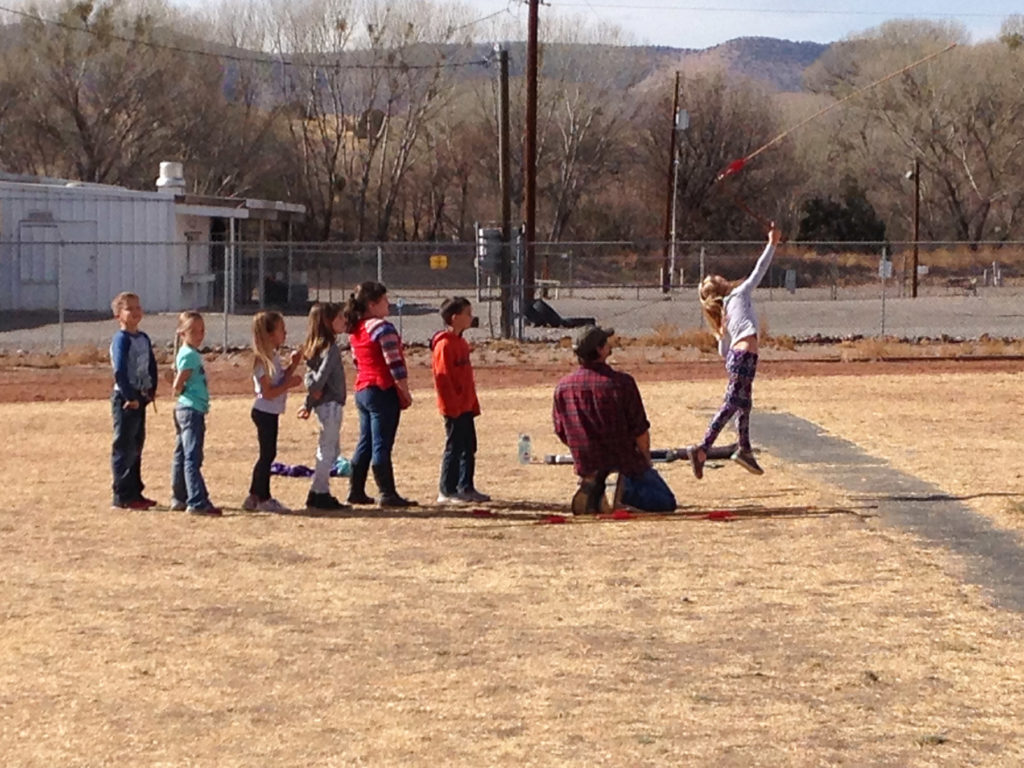
Our last stop was a quick visit to our field school campsite at our friends Scott and Hara’s spare building, where we had time for a quick visit and picked up some artifact-washing supplies. As we left for Tucson the light began to turn the yellowish color of early evening, and I thought of the many times I’ve driven a vanload of worn-out, sleepy students back from field trips and enjoyed the way the hills glow golden in that light. Allen and I did just as much yawning on the drive home as we do in the summer, and we can hardly wait to go back in May.